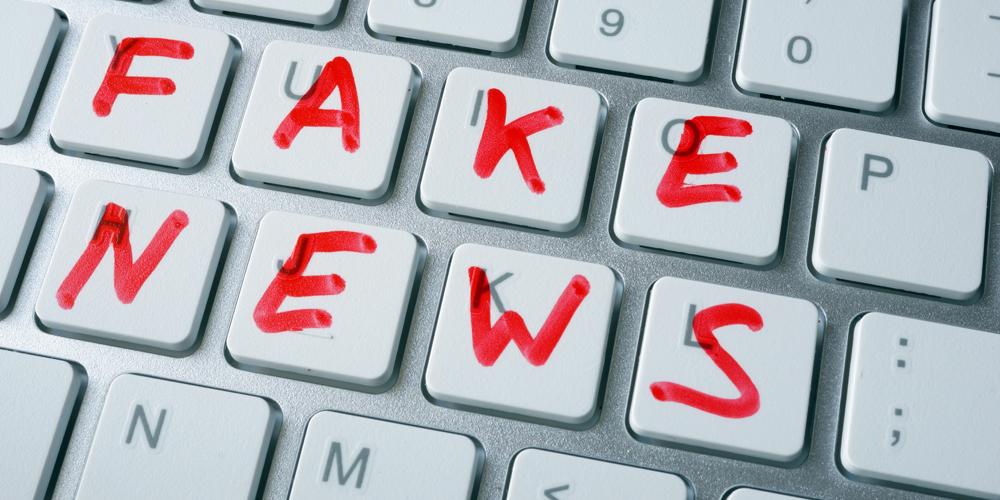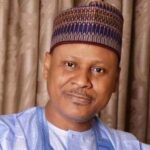On July 1, 1863, Willis Meadows, 20, was shot in the head while fighting for the Confederates in the US Civil War. Miraculously, he survived. When Union soldiers found him, they discovered the bullet had passed through his eye and lodged in his head and it was too risky to reach in and pluck it out. So they bandaged him and sent him off to face the rest of his life.
Meadows lived a long life. By the time he turned 78, in 1921, Meadows was seized by a great coughing fit and just as he thought he was breathing his last, he coughed out the bullet that had been in his head for 58 years.
Somehow, he had survived being shot in the head and somehow had healed himself. It was a most unusual occurrence.
Today’s world is full of flying bullets (threats)—terrorism, eccentric dictators with pudgy fingers on nuclear bomb trigger buttons, climate change, energy crisis, half-dead economies, and a global pandemic etc.
One of the greatest threats, for journalists especially, has to be fake news. This is not because Mr Trump has made the term popular or that the Nigerian Army has suddenly gained proficiency in indiscriminately slapping the tag on news reports about them. It is because it has the potential, especially in a country sitting on the intersection of frayed nerves, to inflame sentiments, create chaos, the collapse of industries and in some cases, violence and deaths.
By the time people realise that the news is fake, the damage is already done.
Major news organisations have fallen victim to this, including Daily Trust, which, last week, erroneously published reports of a chopper being shot down in Borno before it emerged that it had been sold a dummy.
Fake news is not new. It was the illegitimate twin of journalism because it was there, in the 19th century, when mass media took off.
The sensational (yellow) journalism of the 1890s, aggressively driven by William Randolph Hearst and Joseph Pulitzer, was marked by the commercialization of gossip and fake news. Mr Hearst went as far as fabricating news and drove sentiments that led the US to war with Spain because he believed that would boost his newspapers sale.
Then, as is the case now, it was those in the media that decided mostly to regulate themselves, to bury fake news, or yellow journalism, as it was then called and creating sanity in that sector. Today, the media is struggling to contain the resurgence of fake news.
Sadly, in some instances where the media in Nigeria has had the chance to redeem itself, it had often floundered. In the 1990s, the term AGP (Any Government in Power) trended because the only television network in Nigeria at the time, the NTA, was owned by the government and sang the praises of any general sitting on the throne. The moment there is a regime change, the NTA would make an impressive volte-face with the grace of a ballerina turning on a coin.
At no time was this demonstrated more than after the sudden death of General Sani Abacha in 1998. On June 7, that year, the NTA Network News at Nine kept the sustained campaign to impress on Nigerians that Abacha was the ONLY person fit to rule, the messiah, without whom the country would implode. The NTA, like most Nigerians, did not know that at that very moment, Abacha was taking his last breaths and died in the early hours of June 8. That same night, the tune on the NTA changed to a sombre one and the next day, it set about obliterating its embarrassing Abacha bootlicking and swiftly moved on to the new general in charge.
Sadly, the government-owned media in Nigeria, especially, have been so conditioned to the AGP syndrome that in 2011, long after Abacha’s death and military juntas had become a thing of the past, I did a content analysis of the NTA’s news coverage in the run-up to the 2011 elections. The results, after weeks of studies, showed that on average, the then ruling party, the PDP, had the first 19 minutes of the news, featuring campaign coverage and interviews with party chieftains at various levels. The major opposing party then, the CPC, had an average of four minutes and the other parties shared two minutes daily.
Before the results were published, I interviewed then NTA Director of News, Garba Mamu, who insisted that never in all his years in service has any government official impressed on them what news to carry or who to favour in their coverage.
When he read the results of the findings, he seemed shocked by how far they have leaned into the PDP’s backside, without coercion, missing the chance to heal themselves from the chronic bootlicking they picked up during decades of military dictatorships.
To address fake news, the media must be deliberate. They must remove themselves from their comfort zones and decide what kind of news media they want to be.
We are in the instant age, with social media challenging conventional journalism to break news. As we all know, not all eyewitness accounts are reliable and journalists must do due diligence before publishing. They must learn how to negotiate some truce with the beast called social media. Being first with the news is a slippery slope to perdition and journalists must strive to be first, not just with the news, but also with accurate and detailed information.
Before journalism, fake news existed. It was called gossip. It started many wars and cost many lives and over the years, in its current iteration, has embarrassed many reputable journalists. Fake news seems to rise with the rise of new forms of mass media. In the 1890s, it rose alongside printing presses that made newspapers cheaper and truly a medium of mass communication. Today’s rise of fake news coincides with the prominence of social media.
Still, journalists have always been conned by fake news. In the late ’80s, for instance, on different occasions, some news media published reports of the death of Nigeria’s first president, Dr Nnamdi Azikiwe only for news hounds and sympathizers to throng his Onuiyi Haven residence in Nsukka to find that rumours of the man’s death were, well, grossly exaggerated.
The challenge today is that news travels at an exponential rate. Fake news travels twice as fast. In the desperation to catch up, journalists leave themselves exposed to pitfalls that make them look, not like the professionals that they should be, but like bumbling amateurs.
To avoid this, journalists and media organisations simply need to invest a little more in fact checking and install proper mechanisms to verify any information they publish. It may cost money and may take time, but ultimately, it is far cheaper than the cost of publishing fake information.
The bottom line is that journalists and the media in general, like Willis Meadows of the American Civil War, must find ways to heal themselves and cough out the bullet that has been in their heads all these years. The sanity of the whole world relies on it.

 Join Daily Trust WhatsApp Community For Quick Access To News and Happenings Around You.
Join Daily Trust WhatsApp Community For Quick Access To News and Happenings Around You.


